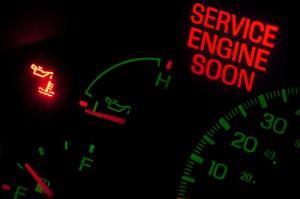What you need to know about keeping your DEF tank full & your fleet running
In an effort to rein in emissions, the Environmental Protection Agency (EPA) began passing rigorous  legislation. It started in 2007, with regulations requiring commercial vehicles to slash particulate matter from .10 to .01 g-bhp[1] and nitric oxide and nitrogen dioxide (NOx) from 2.5 to 1.10 g-php. In 2010, the EPA passed even more stringent regulations, challenging the heavy-duty truck industry to develop cleaner diesel engines that would reduce NOx from 1.10 to .20 g-bhp per hour.
legislation. It started in 2007, with regulations requiring commercial vehicles to slash particulate matter from .10 to .01 g-bhp[1] and nitric oxide and nitrogen dioxide (NOx) from 2.5 to 1.10 g-php. In 2010, the EPA passed even more stringent regulations, challenging the heavy-duty truck industry to develop cleaner diesel engines that would reduce NOx from 1.10 to .20 g-bhp per hour.
Selective Catalytic Reduction (SCR) Technology: What it is and How it Works
We covered the first of two technologies developed to comply with regulations in my previous post: Enhanced Exhaust Gas recirculation (EGR) technology. Today, we’ll explore the second: Selective Catalytic Reduction (SCR) technology.
An after-treatment approach, SCR technology relies on an ammonia-based catalyst to break down dangerous NOx emissions. When exhaust leaves the truck engine with particulate matter and NOx, the particulate matter is trapped in a Diesel Particulate Filter (DPF). The NOx gases pass through to the SCR. Diesel Exhaust Fluid (DEF) is then injected into the SCR, where the ammonia and NOx react and are converted into a harmless mix of nitrogen and water.
The Downside of DEF
SCR technology offers a number of benefits. It doesn’t require DPF regeneration as often as EGR technology, improves fuel economy by up to five percent, making it ideal for long-haul trips; generates less soot and requires less active regeneration of diesel particulate filters (DPFs). However, there are downsides: the DEF must be stored in a tank onboard the truck and refilled regularly.
To be EPA-compliant, SCR systems must be equipped with driver warning systems that alert drivers when the DEF tank is almost empty. In addition, drivers can’t operate vehicles without areducing agent, vehicles must have sensors that keep drivers from using the wrong reducing agent and tanks must be durable and tamper-proof. There are other limitations:
- Added weight of the extra DEF/urea tank on the truck
- Lack of a fully-built-out urea supply infrastructure
- Extra cost of purchasing DEF
- Maintenance of DEF system, sensors and compliance-related devices
- Heated storage to prevent DEF from freezing (at 12o F)
- Disruption to vehicle performance if DEF tank isn’t refilled
When the dashboard lights up, it’s time to add fluid
So how do drivers know when to add DEF? Fortunately, this isn’t difficult. When the EPA passed the new emissions-reductions regulations, the agency mandated that vehicle manufacturers put measures in place to prevent vehicles from running without DEF.
Before a truck’s DEF tank empties, drivers see a series of dashboard alerts, warning them to add more fluid. When the DEF tank level drops below 10 percent, an amber warning lamp comes on. At five percent, it starts flashing. If DEF drops below 2.5 percent, drivers see a solid amber warning light. If drivers ignore the signs and run out of DEF, engine power is reduced and a solid red warning light displays. If drivers continue to ignore warnings, vehicle speed is eventually restricted to five mph until drivers refill the DEF tank.
Want to prevent disruption? Watch for the signs & keep the tank full.
One of the biggest roadblocks SCR technology presents is the need to regularly replenish the DEF onboard the truck. If driver fail to do so, problems result, including complete vehicle shutdown. In general, three driver behaviors cause problems:
- Ignoring the signs: drivers should always pay attention to the DEF fluid indicators/warning lights, just as they check fuel levels or oil change indicators. Ignoring these signs can result in severe speed limitations or engine shutdown. The three warning lights display:
- Exhaust Fluid range: displays available mileage range when DEF gets low
- Exhaust Fluid Low Speed Limited Soon: displays when the DEF range drops below a certain level
- Exhaust Fluid Empty Refill Now: indicates that the DEF tank is empty and the engine will impact vehicle performance
- Putting contaminated DEF into the tank: Contamination can result when any fluid other than authorized DEF is placed in a tank. The most common mistake occurs when someone puts diesel fluid in the DEF tank.
This impacts vehicle performance and causes severe damage to the DEF system. If the DEF is contaminated, the fuel tank must be drained and cleaned, and a system flush performed to clear the indicator.
- Bypassing regeneration: if the DPF regeneration light comes on and a driver ignores it, the engine de-rates, fuel economy is compromised, and the vehicle breaks down. The DPF will have to be replaced, resulting in costly repairs.
Clearly, there are upsides and downsides to both SCR and EGR emissions-reducing technologies. One of the keys to making the most of either one is staying on top of maintenance. To learn how proactive maintenance keeps vehicles on the road read this…
Written by: Mike Dennis, Group Director Maintenance Operations at Ryder. He is an operations professional with more than 20 years of experience in logistics, transportation and maintenance. Throughout his career, Mr. Dennis has played an active role in developing maintenance solutions.
[1] g-bhp = Grams per brake horsepower hour

